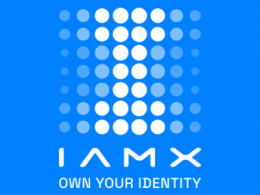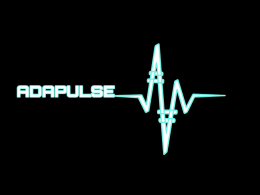On November 26, 2021, after a surprise staging, and with very little publicity in the community, MuesliSwap successfully launched the first decentralized exchange (DEX) on the network Cardano main.
While it only took about three weeks for the first 100,000 smart contract interactions, that number doubled in less than half the time, topping 200,000 on January 10 and 300,000 on January 17.
Not only that, but it is currently the DeFi platform on Cardano with the most executed smart contracts, as of this writing.
MuesliSwap allows you to trade crypto assets (tokens and NFTs) on the Cardano blockchain. It also operates on Smart Bitcoin Cash, a sidechain for Bitcoin Cash.
The team partnered with MLabs to audit the MuesliSwap v2 protocol, which will bring new advanced trading features in 2022.
To develop a DEX, the network ledger model must be respected, on which to design the transaction execution model. Before explaining the MuesliSwap model, it is necessary to understand these issues.
The Account-Based Registry Model vs. the eUTxO Model
The two most used accounting registry models in blockchain are the account model and the UTxO. In the best known blockchains, the first is used in Ethereum and the second in Bitcoin. Cardano employs its improved model, eUTxO (extended UTxO).
The account model maintains a global state shared among all participants, which then records, in each block, the balance of each participant’s account.
The eUTxO model exposes the concurrency of the system, where the transactions are presented simultaneously in the block, and thus the registration is direct in the blockchain, and is not a sequence of globally agreed account balances. The crucial point here is that each UTxO can only be spent once, which prohibits state sharing.
The Operating Models of DEXes
I will not detail all the models that are currently being developed in decentralized exchanges, but only the AMM and the Decentralized Order Book, necessary to understand the MuesliSwap model.
The Automated Market Maker Model
Traditionally, in centralized exchanges, the market making model is developed with large trading companies with large capital, financial knowledge and regulatory compliance, which facilitate high liquidity, and make profits through the trading spread (difference between the buying and selling prices).
Instead, in DeFi (decentralized finance), in decentralized exchanges (DEXes) the most widely used model is Automated Market Maker (AMM), which allows individual retailers, called liquidity providers (LPs), to pool their funds, easily convert into market makers, and profit from trading fees. This model was first proposed by Uniswap.
Traders can trade tokens into these liquidity pools based on a deterministic algorithm. Although suitable for on-chain smart contracts, AMM presents its own classes of problems, namely impermanent loss, low capital efficiency, and early transaction execution. These problems are being addressed in different ways by blockchain projects.
For blockchains based on the account ledger model, there are already a lot of exchanges with the AMM model that work, but when replicating it on the UTxO ledger blockchains, they had malfunctions. Therefore, it is crucial to be aware of the very different design options for a DEX model between both types of blockchain ledger.
The MuesliSwap Decentralized Order Book Model
In traditional centralized securities exchanges, the classic exchange protocol used is the Order Book. Traders can send their buy and sell orders to a central market maker, whose job it is to then match those orders following some matching strategy. Thus, through the central entity of trust, matching pairs of buyers and sellers can execute their desired trades.
The orders can be “market” or “limit”, where the first expresses the intention to operate certain tokens at the available market price, and can be executed immediately or not, in case of non-availability, on the other hand, a limit order has certain prices.
The developers of MuesliSwap worked on the basic observation of game theory, which is the following: a decentralized system regulates itself when the incentives are set in such a way that the strategy that maximizes the reward of each individual coincides with the strategy that maximizes the reward of each individual. strategy that coordinates individuals, and thus achieves the best common result for all. Positive synergy is achieved.
Similar to the centralized order book model, but without a central entity, traders can place buy and sell orders. However, in this model only limit orders are allowed, since they are canceled after a block if they have not been executed.
Orders with information about which token, the price and the amount ordered, are placed based on a smart contract that locks the amount of tokens in the order in an eUTxO, along with a fee in ADA. This eUTxO is registered in the blockchain waiting to be matched, and thus the blockchain acts as an order book.
Here the external matchmaker comes into action, which is observing the chain of blocks in search of matching exchange partners, and if it happens, it executes the transaction and keeps a reward for its work.
In a future article I will explain about the matchmaker and the whole operation of the DEX.
ADA MILK Tokenomics
SmartBCH MILK is the token that powers the smartBCH MuesliSwap ecosystem.
MILK TOKEN is the official governance and utility token of MuesliSwap on Cardano. The total supply of our utility token is 10 million (10,000,000) MILK.
Road Map of MILK Token
This is the road map outlining the future development of MILK token. The utilities will be introduced step by step while we are continuing the development of MuesliSwap.
- MILK trading on the MuesliSwap exchange – launched on Tuesday, November 30, 2021, at 14:00 UTC.
- Development of MuesliSwap towards a DAO by
- using MILK to contribute in community votes on listing of new token featured
- giving MILK holders the opportunity to decide on new features of MuesliSwap, and influencing the future development timeline.
- Start of MuesliLaunchPad exclusively for MILK holders.
- Staking of MILK: earn other tokens as a reward for holding MILK (more information will be released 31st January 2022).
- Premium trading features (eg access to advanced monitoring and stock analysis)
- NFT Access (access to exclusive NFTs for MILK holders only)
The team
The website reports that the MuesliSwap team currently consists of seven people and is based in Switzerland. Six of them form the core development team.
All team members are highly skilled computer scientists. The team has several years of experience developing Haskell and designing advanced algorithms.
You can see the members here, and can watch them in an interview.
Website: MuesliSwap
Github: https://github.com/MuesliSwapTeam
In a the second part of this article I will explain how MuesliSwap works.










